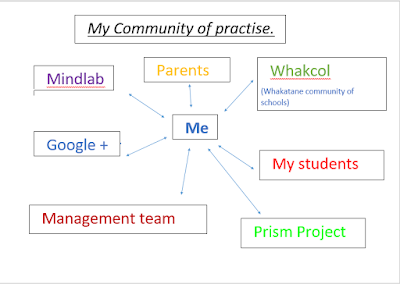Week 26 - Current issues in my professional context
This week I have found blogging a bit easier. I have to admit I am
not a blogger and this is taking me out of my comfort zone. With this said
I have been critically analysing issues of socio-economic factors, school
culture and professional environments in relation to my practice and my
community.
We are a low socioeconomic community but as a community and professionals,
we do not use this as an excuse for any problems we may have. Thrupp
(2006) states "Families from lower SES tend to have different
relationships with school than the middle class" .Our ERO report in 2015 has reviewed our school
as having "highly inclusive learning environments for students and families". We believe
in authentic and purposeful learning this should be differentiated and
respectful of the learner, learning should be challenging and rewarding,
learning should involve reflection and assessment and learning should reflect
the different styles in which children learn. A feature of the
school is the culture of high expectations, where all students are valued as
competent and successful learners.
Our school’s motto is “We love to Learn “- “Kei te aroha matou ki te
matauranga”. Our school’s mission statement is to develop in our children a
love of learning enabling them to reach their potential as confident,
contributing citizens.
Our school’s values are respect, pride, perseverance and
achievement. For past six years, our school has been part of the Ministry of
Education initiative – Positive Behaviour for Learning (PB4L). Our School has
developed this initiative into Growing Great Learners – Be Proud, Be Respectful
and Be Safe. Each week we have a Growing Great Learners’ Focus, which has been
informed, by student behavioural data. GGL (Growing Great Learners) has
played a major influence in my teaching practice, as this is a major area,
influencing relationships and achievements between staff, students and Whanau.
"The valuing of relationships as the most important factor influences our
students greatly. To understand this concept, is to understand that a student
from a lower SES is going to place greater importance on the teacher
student relationship, than they are going to on their schooling achievements”
(Gargiulo, 2014, p. 17).
ERO is likely to carry out the next review in four-to-five years”
(http://www.ero.govt.nz/review-reports/james-street-school-21-10-2015/)
As professionals we were extremely delighted to get this four-to-five year
review and teaching in a low socioeconomic community. It is very
important that other communities understand that teaching in a
lower socioeconomic community does not mean we do not provide an
extremely high standard of teaching and professionalism.
Our school successfully implements the 10 elements
of Stolls (1998) "Norms of Improving Schools “We are continually
reviewing and updating and questioning how can we improve?
References:
ERO Report James Street School - 21/10/2015
Retrieved from:(http://www.ero.govt.nz/review-reports/james-street-school-21-10-2015
Gargiulo,
S. (2014). Principal sabbatical report
Stoll. (1998). School Culture. School Improvement Network’s Bulletin 9. Institute of Education, University of London. Retrieved from http://www.educationalleaders.govt.nz/Culture/Understanding-school-cultures/School-Culture
Trupp, (2006). Improving the schooling chances of New Zealand's poorest
children: policy and community challenges.





